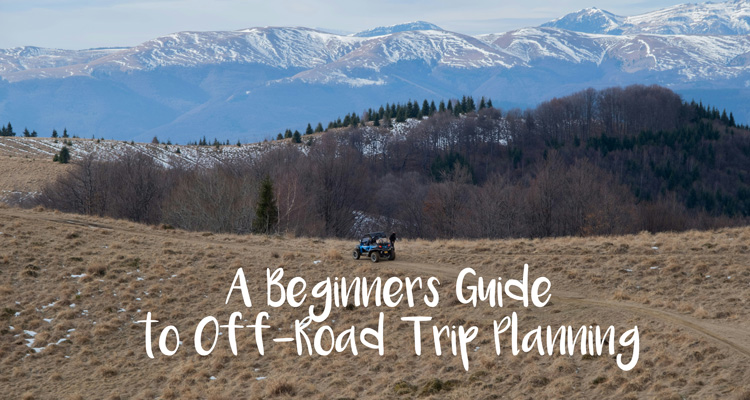Blog
A Beginners Guide to Planning an Amazing Off-Road Trip
If you’re new to the world of UTV riding, you’re in for the experience of a lift time. Embarking on your first off-road adventure is a thrilling experience. You’ll experience the ruggedness of the outdoors and the excitement of mastering your machine. Planning the ultimate off-road trip requires careful consideration and preparation. This guide will help you plan a memorable and safe adventure.
Choosing Your Destination
The first step in planning your UTV adventure is selecting the right destination. North America boasts a plethora of fantastic off-road trails, each offering unique landscapes and challenges. Some popular destinations include:
- Moab, Utah: Known for its stunning red rock formations and challenging trails, Moab is a haven for off-road enthusiasts. The iconic Hell’s Revenge and Fins and Things trails offer a mix of excitement and breathtaking scenery.
- Hatfield-McCoy Trails, West Virginia: This expansive trail system covers over 700 miles and offers trails for all skill levels. The diverse terrain includes everything from rocky paths to muddy trails.
- Ocala National Forest, Florida: For a more forested and less rocky experience, Ocala National Forest provides sandy trails and lush landscapes, perfect for a family-friendly adventure.
When choosing a destination, consider the skill levels of all participants, the type of terrain you want to explore, and the distance you’re willing to travel.
Planning Your Route
Once you’ve chosen your destination, it’s time to plan your route. Research the trails in the area and select those that match your skill level and interests. Many trail systems offer maps and online resources detailing the difficulty, length, and features of each trail.
When planning your route, consider the following:
- Trail Difficulty: Ensure that the trails you choose are suitable for all members of your group. It’s essential to avoid trails that are too challenging, as this can lead to accidents or damage to your UTV.
- Trail Length: Plan your route based on the time you have available and the endurance of your group. Some trails can take several hours to complete, while others may require a full day or more.
- Points of Interest: Look for trails that offer interesting landmarks, scenic views, or unique features. This can enhance the overall experience and provide great opportunities for photos.
Preparing Your UTV
A successful off-road trip depends on having a well-prepared UTV. Before heading out, perform a thorough inspection and maintenance check. Key areas to focus on include:
- Tires: Check the tire pressure and inspect for any signs of wear or damage. Consider bringing a spare tire and repair kit.
- Fluids: Ensure that all fluids, including oil, coolant, and brake fluid, are at the correct levels. It’s also a good idea to bring extra fluids in case of emergencies.
- Battery: Make sure the battery is fully charged and in good condition. Bring a portable battery charger or jump starter.
- Lights: Test all lights, including headlights, brake lights, and turn signals. Off-road trails can get dark, and good visibility is crucial for safety.
- Winch: If your UTV has a winch, test it to ensure it’s functioning correctly. A winch can be invaluable if you get stuck or need to help another vehicle.
Packing Essentials
Packing the right gear is crucial for a comfortable and safe off-road trip. Here’s a list of essentials to bring:
- Safety Gear: Helmets, gloves, goggles, and protective clothing are a must. Riding off-road can be unpredictable, and proper gear can prevent injuries.
- Navigation Tools: A GPS device, maps, and a compass can help you stay on course. Many trail systems offer downloadable maps for GPS units.
- Communication Devices: Two-way radios or a satellite phone can be lifesavers in areas with no cell signal.
- First Aid Kit: Accidents can happen, so a well-stocked first aid kit is essential. Include items like bandages, antiseptic wipes, pain relievers, and any necessary medications.
- Emergency Supplies: Pack items like a fire extinguisher, multi-tool, duct tape, and a flashlight. These can help in case of a breakdown or other emergencies.
- Food and Water: Bring enough food and water for the duration of your trip, plus extra in case of delays. Non-perishable snacks and hydration packs are convenient options.
- Camping Gear: If you’re planning an overnight trip, pack camping gear such as a tent, sleeping bags, and cooking supplies.
Riding with a Group
Off-roading is often more enjoyable and safer when done with a group. Here are some tips for group rides:
- Communication: Establish a communication plan with your group. Use hand signals, radios, or agreed-upon signals to stay in touch.
- Pacing: Keep a pace that suits the entire group. Regular stops can help keep everyone together and provide time for rest and sightseeing.
- Lookout: Assign a lead and a tail vehicle to ensure that no one gets lost or left behind. The lead can navigate the trail, while the tail ensures everyone stays together.
Final Preparations
Before you hit the trail, double-check the weather forecast and trail conditions. Notify someone of your plans, including your route and expected return time. Ensure all necessary permits and registrations are in order.
Planning your first UTV off-road trip will be unforgettable. You’ll make memories that will last a lifetime. It involves careful preparation and planning. But by choosing the right destination, planning your route, preparing your UTV, packing essential gear, and riding with a group, you’ll have a safe and enjoyable adventure. So gear up, hit the trails, and experience the thrill of UTVing in the great outdoors!
